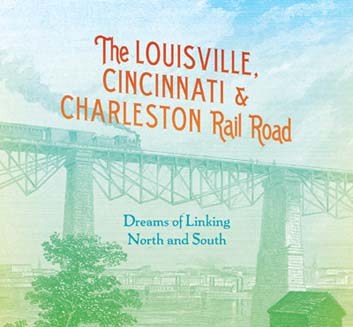 The Louisville, Cincinnati & Charleston Rail Road: Dreams of Linking North and South. By H. Roger Grant. (2014 Pp. 191. $40.00. Hardcover. Bloomington & Indianapolis: Indiana University Press. http://www.iupress.indiana.edu/) ISBN: 978-0-253-01181-7.
The Louisville, Cincinnati & Charleston Rail Road: Dreams of Linking North and South. By H. Roger Grant. (2014 Pp. 191. $40.00. Hardcover. Bloomington & Indianapolis: Indiana University Press. http://www.iupress.indiana.edu/) ISBN: 978-0-253-01181-7.
Roger Grant is a History Professor at Clemson University and has written over 30 books, several of which involved railroads. This particular book, which is well documented, focuses on Antebellum plans to expand transportation overland and particularly creating a line from Louisville, Cincinnati and Charleston. What enhances the value of this book is that it not only covers the transportation issues over land in the early 1800s and into the early 1900’s, in the form of railroad solutions, it also addresses political, economic and social aspects that were related to this effort. When the idea for a railroad to link the three cities was still in its infancy, travel was primarily on foot or with animals and tended to take days or weeks to travel any distance. Weather and the terrain also impacted the time it took to get from one location to another. With the advancement of steam engines and the recognition that this could provide a solution, plans were put together to create faster land routes to improve transportation of goods, people and even communication. With there being distinctions between the North and the South, it was felt that easier means of connecting them would result in growth for all and the plans that rose to the top included linking Louisville, Cincinnati and Charleston. Ultimately the plan was considered a failure; however, there is a lot to be learned from the journey of the idea to the final result.
This book discusses the nuances involved in many sectors as the plan was created, implemented and an ultimate failure by not only the challenges involved in building the railroad, but also by factors such as the Civil War. From the politicians who argued and debated the issues down to the small town farmer who’s land lay in the path, all were impacted in various ways. For the researcher, this is a great source in learning how this railroad project affected people, places and things not only in large cities but also in small, out of the way communities. The implications of a major railroad project impacting a large swath of Kentucky land could provide elements of context when researching occupations, motivations for relocation, or financial changes in this area.
Review by: Linda Colston, KHS Library Technician/Genealogist
